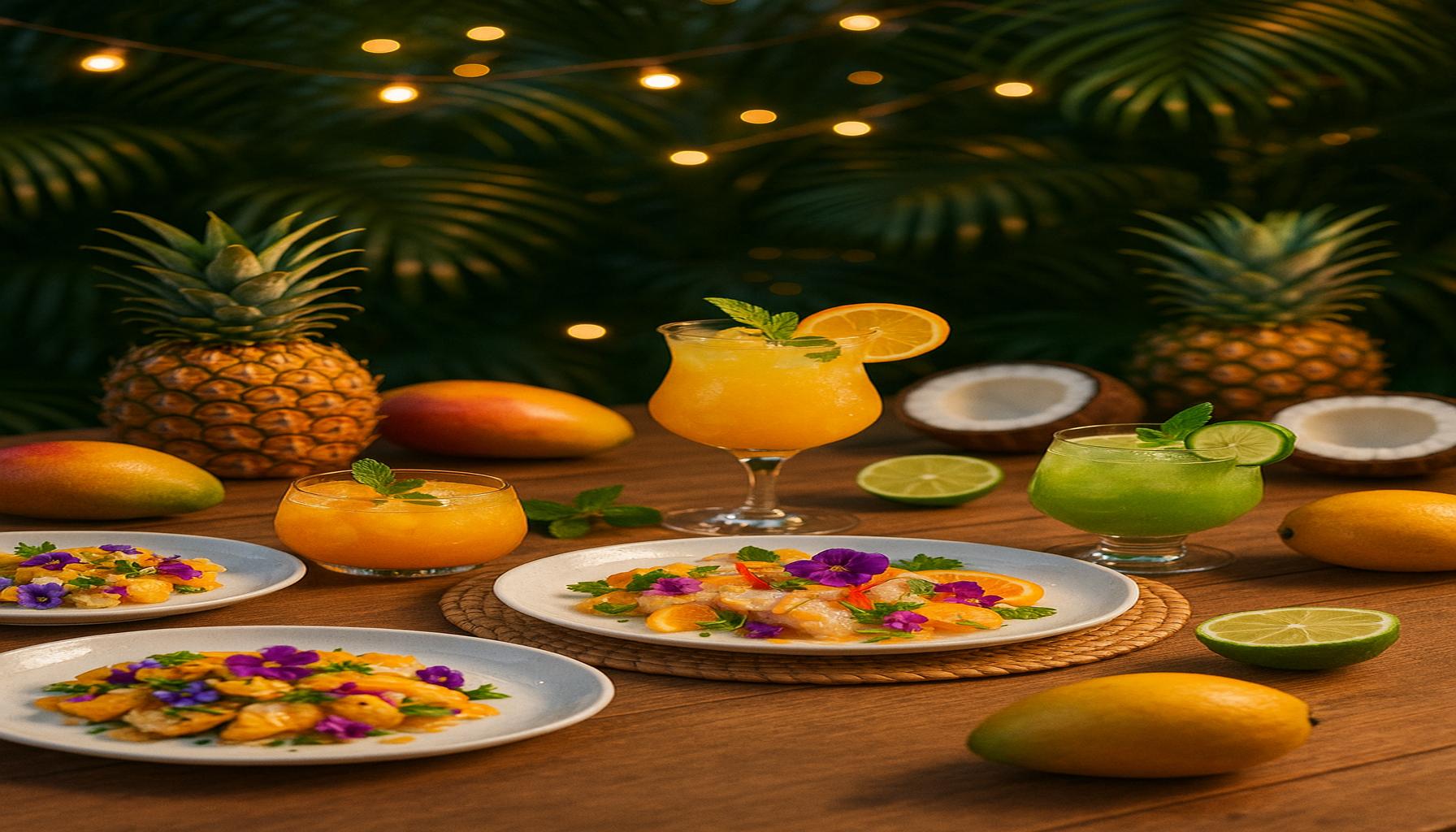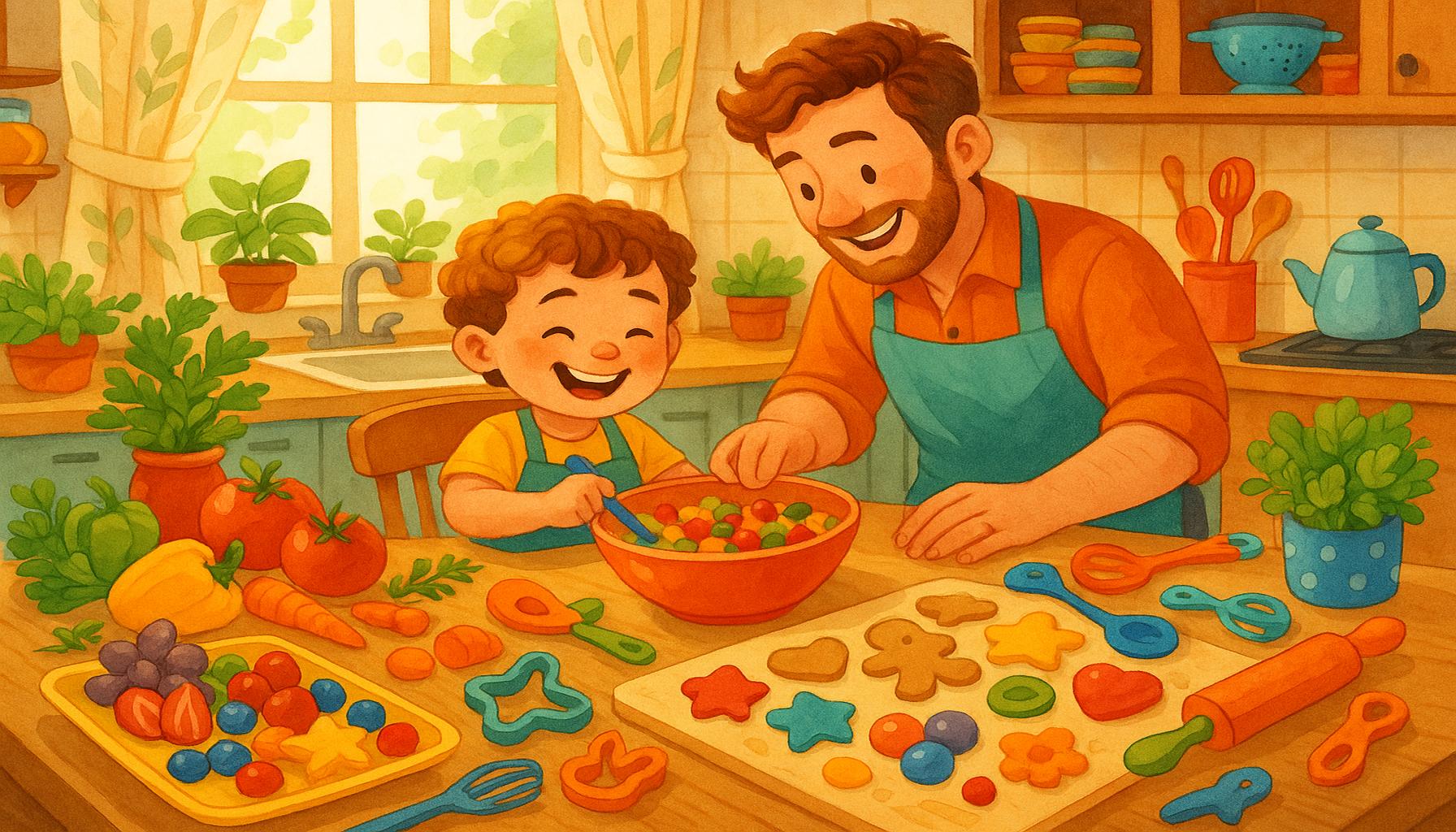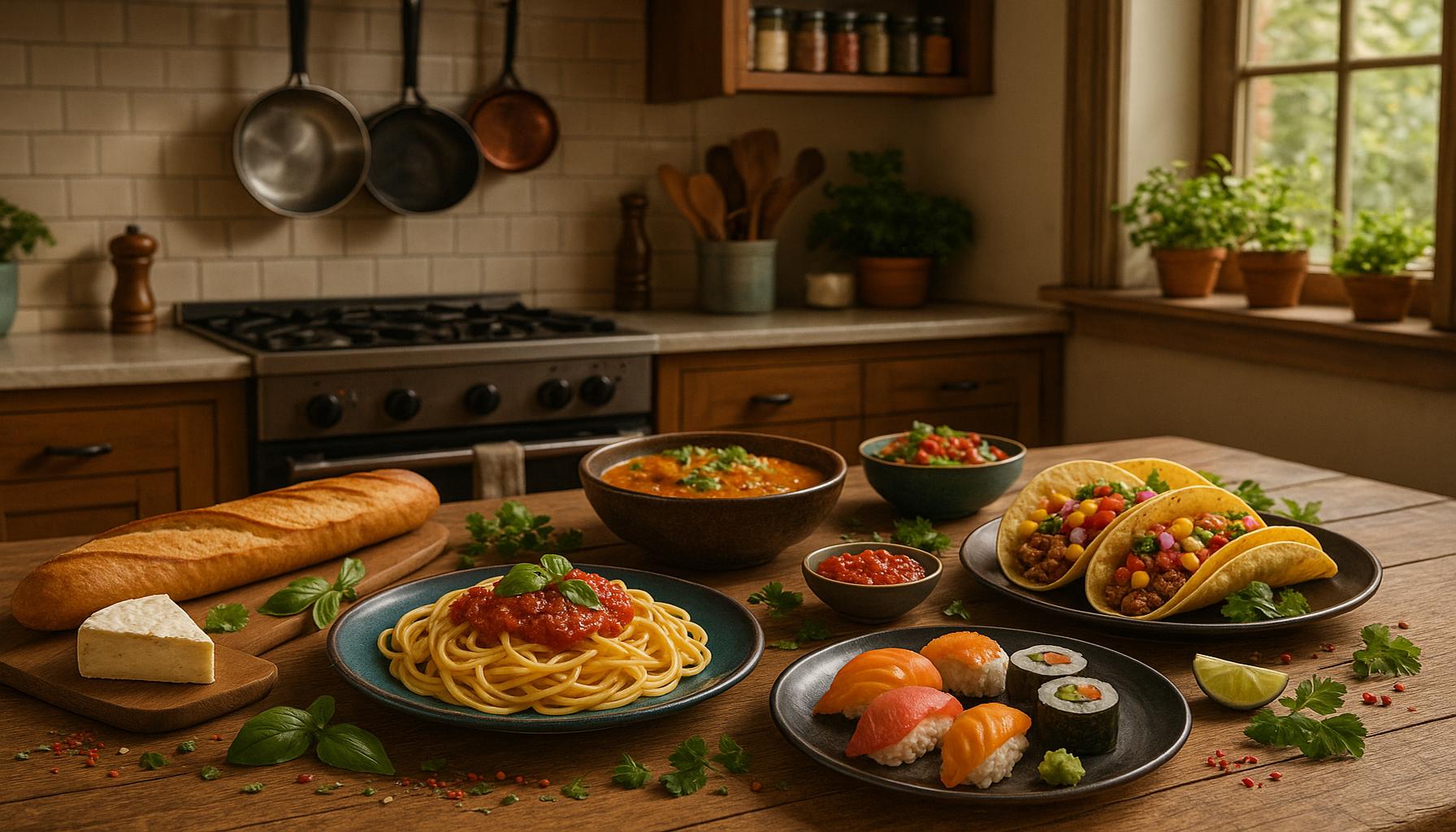Visual Culinary: The Importance of Aesthetics in the Preparation and Presentation of Dishes
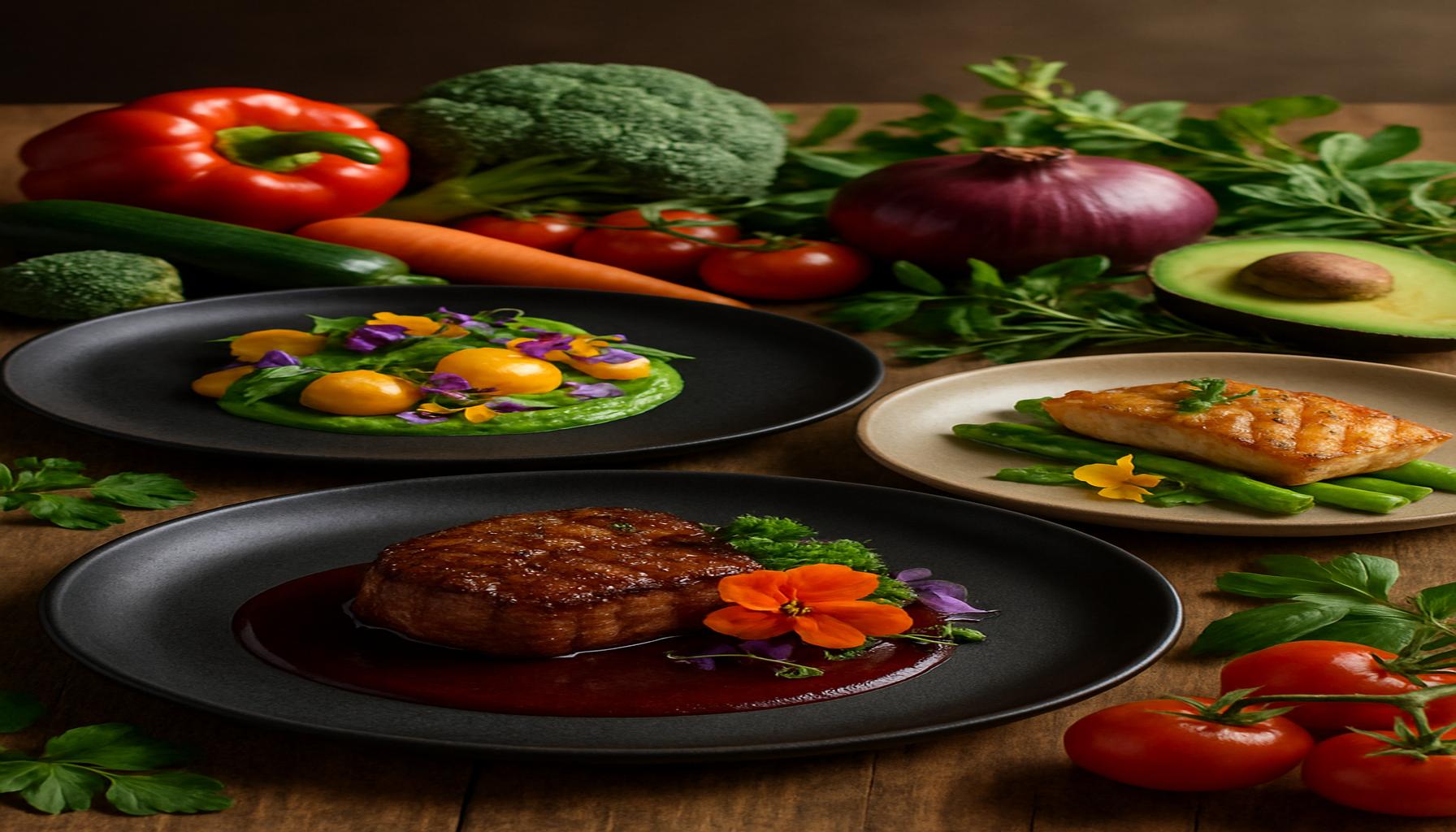
The Impact of Aesthetics in Gastronomy
The intricate relationship between food presentation and the overall dining experience is profound. When diners approach a beautifully plated dish, they are not just looking at food; they are engaging with an artistic expression that sets the tone for their meal. The art of visual culinary isn’t merely the cherry on top; it is often the deciding factor in whether a dish stands out in a crowded market of flavors and experiences.
Why Aesthetics Matter
Consider the first impression a dish makes. The way food is presented influences a diner’s perception of the restaurant or home cook’s skill. If a plate is haphazardly arranged, diners may subconsciously equate that with a lack of attention to flavor, while a meticulously plated dish often raises expectations. A classic example of this is found in French cuisine, where dishes like Coq au Vin are intricately garnished with fresh herbs, elevating their appeal beyond the traditional stew.
Moreover, enhanced flavor perception can occur through visual appeal. Studies suggest that the colors, shapes, and presentation of food can actually influence a person’s taste experience. For instance, a dish that showcases a variety of colors—from vibrant greens to rich reds—can enhance a diner’s anticipation and make the meal more enjoyable. This phenomenon is especially prominent in the realm of desserts, where the visual presentation of layered cakes or artistically arranged pastries plays a key role in their perceived flavor.
The Role of Social Media
In today’s digital age, the significance of a visually stunning dish is further magnified by the influence of social media. Platforms like Instagram and TikTok have driven a culinary revolution, compelling chefs and home cooks alike to create dishes that are not only delectable but also Instagram-worthy. The phenomenon of “food photography” has transformed dining into an aspirational experience, with hashtags like #FoodPorn and #InstaEats inspiring countless foodie enthusiasts to curate visually attractive spreads in their own kitchens.
Culinary Techniques and Personal Expression
The techniques used to enhance plate aesthetics vary widely and can include thoughtful layering of ingredients, the use of contrasting colors, and creative garnishing. Chefs often take inspiration from art and nature, resulting in dishes that resemble a painter’s palette or a garden in bloom. This artistic approach not only allows for personal expression but also invites diners into a narrative that extends beyond taste. Each plate tells a story—be it a vibrant heirloom tomato salad decorated with edible flowers or a minimalist yet striking dish of sushi, where every piece of fish reveals the meticulous effort behind the craft.
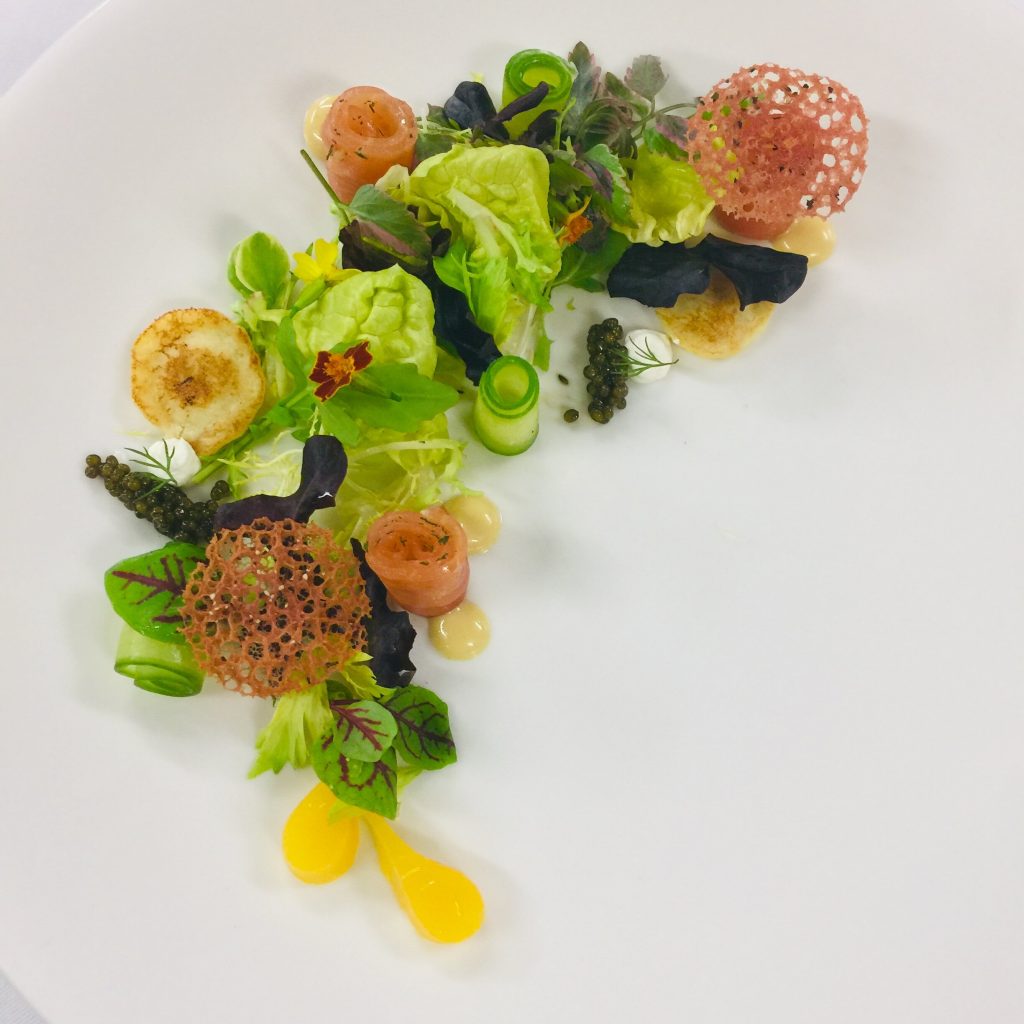
Conclusion
As we navigate through the vibrant world of visual culinary, it becomes evident that the aesthetics of food have significant implications. From establishing first impressions to enhancing flavor perception and driving social media engagement, the visual aspect of dining is an ever-evolving facet of gastronomy. By exploring techniques and cultural influences in food presentation, we can appreciate how a simple plate transforms into a form of artistic expression that resonates deeply with our senses.
DISCOVER: Click here to taste the world
The Intricacies of Plate Presentation
The journey of a dish, from conception to consumption, is often a visual spectacle. Each component on the plate plays a vital role, not just in flavor, but in creating an engaging experience for the diner. In culinary arts, aesthetics serve as a gateway that can transform ordinary meals into extraordinary adventures. The way a dish is plated can evoke emotions, memories, and even anticipation, influencing how it is perceived by diners across the United States and beyond.
The Science Behind Visual Appeal
Scientific studies into the psychology of food indicate that visual cues significantly influence flavor perception. For example, a dish adorned with a variety of vibrant hues can enhance the expected flavor and elevate the diner’s overall experience. This is rooted in the concept of sensory interaction, which suggests that our senses do not operate in isolation; rather, they combine to shape our total perception. A meal that dazzles the eyes is likely to be perceived as more flavorful and delicious.
One of the best ways to understand this phenomenon is through the use of color contrasts and plating techniques that emphasize freshness and quality. For instance, think of a colorful fruit salad where the ruby red strawberries contrast beautifully against bright green kiwis, and deep purple blueberries. This not only tantalizes the eye but also signifies a mix of flavors and textures that leap off the plate.
Plating Techniques: A Craft of Its Own
When it comes to the preparation and presentation of dishes, several techniques can elevate the aesthetics and transform everyday meals into visual feasts. Here are some popular plating techniques used by chefs that can enhance visual appeal:
- Stacking: This technique involves layering ingredients to create height on the plate, adding dimension and a playful element.
- Negative Space: Allowing empty space around the food helps to highlight its shape and form, drawing the eye to the central elements.
- Drizzling and Splattering: Using sauces like coulis or reductions in decorative lines or splashes creates visual interest and stylistic flair.
- Garnishing: This involves the careful addition of herbs, microgreens, or edible flowers to enhance a dish’s color, texture, and freshness.
Chefs often experiment with these techniques to create signature styles that not only reflect their culinary philosophy but also enhance the dining experience. For instance, a chef specializing in Asian cuisine might focus on minimalist presentations that echo the simplicity and balance vital to dishes like sushi or sashimi, while a pastry chef might use vibrant colors and intricate designs to enhance dessert offerings.
The Influence of Cultural Aesthetics
Across different cultures, the importance of aesthetics in food preparation and presentation is evident. Traditional Japanese cuisine, for instance, emphasizes harmony and balance through its meticulous arrangement of food, echoing the principles of nature. Similarly, in Mexican cooking, vibrant colors and bold garnishing are not just additions; they are an expression of cultural identity. Each culture brings its narratives through not just what is served but how it is served. This interplay of culture and aesthetics in culinary practices serves to deepen our appreciation of each dish.
| Advantage | Importance |
|---|---|
| Enhanced Experience | Aesthetically pleasing dishes elevate the dining experience, stimulating the senses beyond taste. |
| Visual Appeal | The presentation of food can influence perceptions of flavor and quality, making visual aesthetics crucial in culinary arts. |
The interplay of aesthetics and culinary skills has transformed the way we perceive food, promoting not only satisfaction through taste but also through sight. In a world where visual impressions are pivotal, dishes crafted with consideration for presentation can evoke feelings of anticipation and excitement. Chefs and home cooks alike are recognizing that the arrangement of colors, the choice of plates, and the garnishing of dishes are not simply afterthoughts; they are integral components in creating a memorable meal.Moreover, the psychological impact of beautifully presented food extends to social media, influencing sharing behaviors. Instagram-enthusiasts and food bloggers often seek to showcase their culinary creations, leading to a greater appreciation of the art behind food presentation. The explosion of “food photography” culture encourages chefs to innovate continuously, ensuring that dishes are not only delectable but also visually stunning.By prioritizing aesthetics, the culinary world fosters an environment where creativity and artistry converge, paving the path for new trends and inspiring culinary professionals to push the boundaries of traditional cooking.
DISCOVER MORE: Click here to dive into the art of storytelling
The Role of Texture and Composition
While color serves as a fundamental element of visual appeal, texture and composition are equally significant in crafting a memorable dining experience. The interplay of textures can evoke curiosity and entice the palate before the first bite is even taken. Chefs adept in visual culinary artistry often incorporate contrasting textures—such as the crunchiness of toasted nuts paired with the smoothness of a creamy sauce—to create a multi-sensory experience. Imagine a dish where crispy fried shallots crown a creamy potato purée, engaging not just the eyes but also the fingers and taste buds, prompting diners to savor each component fully.
Strategizing Composition for Impact
The arrangement on the plate, known as composition, is a critical aspect of food aesthetics. Chefs often employ the Rule of Thirds, a principle borrowed from visual arts, to create a more appealing layout. This technique involves dividing the plate into a grid of nine equal sections and placing key elements of the dish at the intersection points. This approach not only creates balance but also guides the eye naturally, drawing attention to the most important components of the dish. For instance, in a beautifully plated risotto, creamy rice could take center stage, while strategically placed vegetables and a drizzle of oil or sauce lead the eye across the dish.
Another fascinating approach is to use height to create drama on the plate. Tall presentations can visually suggest abundance and tantalize diners’ appetites. Think of a feminine tower of layered polenta, sautéed greens, and grilled shrimp, all standing elegantly atop each other, demanding admiration before the flavors even unfold. This incorporation of height not only serves aesthetic purposes but can also showcase the textures of different ingredients, adding layers of intrigue to the dining experience.
The Symbiotic Relationship Between Taste and Presentation
It is essential to understand that aesthetics and flavor are not opposing forces; rather, they share a symbiotic relationship. The presentation can shape expectations and set the stage for the overall judgment of the dish. Research conducted by the University of Oxford indicates that participants consistently rated the taste of dishes as better when they were presented in an aesthetically pleasing manner. This reinforces the notion that a carefully crafted visual presentation can enhance the sensory experience of taste, allowing diners to perceive flavors more intensely.
Furthermore, the rise of social media platforms, particularly Instagram, has created an environment where visual appeal is even more paramount. Diners, particularly millennials and Gen Z, often share their dining experiences online, looking for dishes that are not only delicious but visually striking. The hashtag #foodporn has become synonymous with eye-catching culinary creations, compelling chefs to push the boundaries of aesthetic presentation in order to attract attention and appreciation. This digital phenomenon has further amplified the importance of aesthetics in culinary practices, influencing everything from casual eateries to high-end restaurants.
Environmental Impact and Sustainable Aesthetic Practices
As concerns regarding sustainability grow, many chefs are adopting eco-conscious practices that not only serve the planet but enhance the visual appeal of their dishes. By using seasonal, locally-sourced ingredients, chefs can present vibrant plates that reflect the natural beauty of their surroundings. For example, a summer salad made with heirloom tomatoes, fresh herbs, and edible flowers not only captivates diners with its colors but embodies a philosophy of sustainability. This approach aligns aesthetics with a responsibility to the environment, adding a deeper narrative to the meal that resonates with today’s environmentally-conscious diners.
In summary, the aesthetic aspects of culinary presentation—including texture, composition, and sustainable practices—are vital in crafting an unforgettable dining experience. By keenly understanding and manipulating these elements, chefs transform their dishes into works of art, ensuring that every meal is not only an indulgence for the palate but also a feast for the eyes.
DISCOVER MORE: Click here to dive deeper into captivating narratives
Conclusion: The Art of Visual Culinary
In the realm of culinary arts, the significance of aesthetics in both preparation and presentation has transcended mere decoration to become an integral facet of the dining experience. The interplay of color, texture, composition, and sustainability not only enhances the visual appeal of a dish but also enriches the flavors, creating a harmonious relationship that delights the senses. As demonstrated by research, the aesthetic appeal of a meal can elevate its perceived taste, making it essential for chefs and home cooks alike to prioritize visual culinary techniques.
Furthermore, the modern dining landscape—particularly influenced by social media’s visual-centric nature—encourages an ongoing evolution of culinary presentation. Diners are not only seeking delicious food but are increasingly drawn to visually stunning creations that tell a story, reflect seasons, and harness local ingredients. This shift not only stimulates creativity among chefs but also fosters a deeper connection to the food we consume and the environment in which it is sourced.
As we continue to explore the fascinating world of visual culinary arts, it is crucial to recognize that every plate is an opportunity for storytelling. Embracing fresh ingredients, innovative compositions, and dynamic textures allows chefs to craft memorable experiences that captivate the eye and excite the palate. Ultimately, the journey through the aesthetics of food prepares us for an engaging adventure—one that invites discovery, appreciation, and a celebration of the culinary arts in all their glorious forms.
